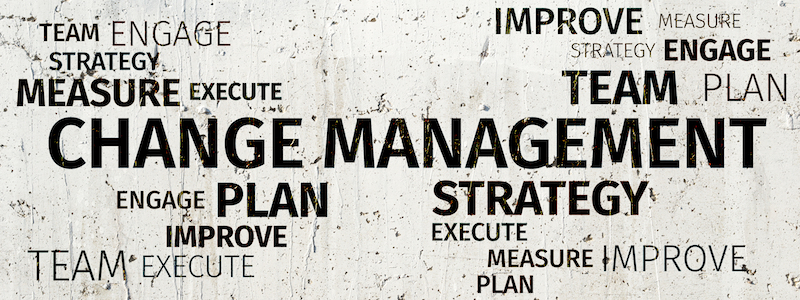“3 Keys to Effective Change Implementation” was originally published by HR People & Strategy in December 2018.
All change begins with a new concept. This concept should shape thinking, which then influences behavior. Only once behavior changes will an organization’s performance change. When there is a disconnect between concept and action, change will either fail to happen, or it will not bring about the desired results. Leaders who want to see their business transformation visions come to fruition must take steps to avoid having these disconnects.
To effectively translate ideas into action in an organization, leaders need to consider two things:
- People must understand the practical implications of a change before they can properly implement it.
- Real change takes time.
Let’s take a look at the dynamics of change through these two lenses, and how to work with them to ensure that the changes you envision are actually enacted in your organization.
Communicating the Concept
Your next game-changing idea can come at any moment. But even the most brilliant flash of insight is worthless without action. Before they can take action on an idea, people need to understand the idea. Therefore, education is often the very first action step that must be taken to get a new idea off the ground.
It’s important for leaders to remember that ideas don’t spring out of nowhere, even when it seems like they do. Great ideas tend to come to people who have spent time with the subject and fully understand the nuances of the problem that need to be solved as well as the context in which it will be addressed. How much time this takes depends on circumstances, but can range from hours or days to a lifetime.
Leaders, with their extensive background knowledge and experience, sometimes don’t realize how much time people will need to fully understand and accept a new concept. Most people can’t just hear the idea and “get it.” They need to understand not just the nuts and bolts of what they’re being asked to do, but the context behind and around it:
- The reason for the change
- How the change will affect the organization as a whole
- What their role is in the change
- How what they are doing will affect others in the organization, and
- How the change process is expected to unfold over time
They also need hands-on opportunities to work with and experience new tools, processes and structures before they will fully assimilate the change.
All of this, of course, takes time.
Taking Control of the Implementation Process
This need for time is amplified in an organization, where multiple individuals and groups must assimilate change together. For leaders whose job it is to stay abreast of and adapt their organization to current and future trends and events, this can create a disconnect. By the time an idea actually makes its way through the organization, the leader is already making plans for new changes.
This time delay can be frustrating for leaders, who wonder why their organization always seems to be dragging behind where they want it to be. And it can be frustrating for lower-level employees, who can’t understand why the company can’t just stick with one thing.
While the problem is unavoidable, there are things leaders can do to lessen the disconnect. First of all, they need to make peace with the fact that they will always be operating several steps ahead of where their organization is operating. Then, they need to realize that it’s not enough to simply pass off their ideas; they need to assist with the implementation long enough for the ideas to start translating into real changes in how work is done.
This is not to be confused with micromanagement. However, it does require leaders to keep an eye on the change process and stay involved enough to ensure that it actually happens. Most of us have experienced or observed change efforts where a lot of talk took place around the change without anything actually being implemented. Without enough leadership, people will wait for others to take charge, or be unable to move forward because they don’t have the resources to do so.
3 Keys to Ensuring Proper Change Implementation in Your Organization
To prevent this dynamic from taking hold in your organization, consider following these three best practices for business model implementation:
- Give people what they need to support the change. Make sure organization members have the time they need to thoroughly understand the change and what’s required of them. Give them adequate tools and training and keep your channels of communication open so they can receive the feedback they need, as well as timely answers to their questions and concerns.
- Monitor the movement of work. Interim goals and to-do lists are a good thing, but be sure they are synced with the ultimate end goal, and that the work is progressing the way it should. This requires planning beyond a simple task list: you need to ensure that people and resources are in place to support the change. A good project manager is an invaluable asset in this regard. So is having the right tools in place to facilitate the movement of work. We have one called the Work Transition Plan, which we call our “baton pass tool,” because it eases the process of handing off work and keeping it flowing through the organization in a timely manner, similar to what happens in a relay race.
- Hold people accountable for outcome. Make sure people know what is expected of them, and call them out if it doesn’t happen.
Great ideas and successful business transformations are prerequisites to productive change in organizations. But, without solid implementation, results may be disappointing. Leaders who want their organizations to progress need to understand how people and organizations digest and implement change, and make sure their organizations are set up for effective change implementation. By staying involved enough in the change to ensure that it moves forward properly, leaders will be far more likely to see their vision come to pass.





